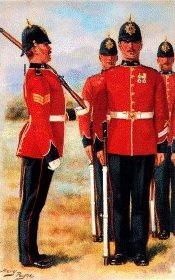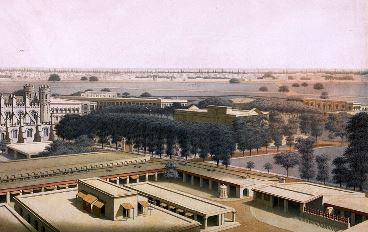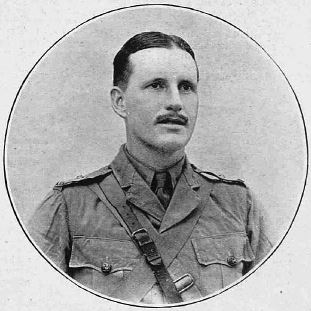alfred mallandaine + eleanor cochran
Alfred was born on 17 January 1853 at 2 Lamb Lane in Newton, near Preston in Lancashire, the youngest son of Isaac Mallandaine and his second wife Jane Cook. At the time, his father was working as a Silk Weaver but several years later he joined the army and served with the Army Hospital Corps for the next twenty years. By 1860, Isaac was posted to Kent and the family lived first in Walmer and later in Rochester and Chatham.

On 9 December 1865, Alfred enlisted in the army at Chatham and was posted to the 1st Battalion of the 20th Regiment of Foot which was later renamed the Lancashire Fusiliers. His attestation papers note that he was 14 years and 3 months of age but in fact, he was one month shy of his thirteenth birthday. He was described as being only 4’8” tall with auburn hair and light hazel eyes and his pre-enlistment occupation was given as Labourer. He enlisted for an initial term of 13 years with the rank of Boy, then Lad before finally attaining the rank of Private on 11 September 1869. His first eight years in the army were spent in England before an overseas posting to Bermuda between 1873 and 1876; while in the Caribbean, he was promoted to Corporal and shortly after, he was reassigned to the Lancashire Regiment where he achieved a second promotion to Sergeant on 12 January 1877. The regiment was posted to Halifax, Nova Scotia in the fall of 1876 and while there, Alfred re-engaged in the 20th Regiment for an additional 7 years of service.
Three weeks before his posting in Canada was due to end, Alfred married Ella H. Power in a Methodist Chapel in Halifax, Nova Scotia. The register entry notes that Ella was a 25 year old spinster, born in Lunenburg, Nova Scotia to James and Hannah Power but this information has not been verified by other records as no birth record has been found for Ella nor any records relating to a Power family in Lunenburg.
On 12 November 1878, Alfred was transferred to Cyprus and remained there until his return to England on 11 October 1880. When the census was taken five months later, Alfred was living at Knellar Hall in Twickenham which was the site of the Army music school. He was listed as a 29 year old student and Sergeant in the 1st Battalion of the 30th Foot, which was then the East Lancashire Regiment, and strangely, his marital status was given as unmarried. Its not clear from Alfred’s military records whether he was a regular soldier or an army musician but his musical abilities were obviously recognized and resulted in this opportunity to train as an army bandmaster at Knellar Hall.
On 23 September 1881, Alfred married Eleanor Hoyt, a widow, at the Church of St Philip & St James in Whitton near Twickenham with his paternal aunt Mary Kinnerly in attendance. Eleanor was living in Whitton but her age was listed only as ‘full’ and her father was named as James Cuppaidge Cochrane, deceased. Alfred was listed as a bachelor on the register despite his marriage three years earlier and although the lack of reference to his first marriage seems strange, additional research on the Cochrane family provides a possible explanation.
Eleanor was born in Lunenburg, Nova Scotia in 1852 to James Cuppaidge Cochran, an Anglican clergyman, and his wife Ann Mathilda Power. She married James Hoyt in Halifax on 1 September 1869 and they had three children born between 1870 and 1874 but only two survived infancy. No death record has been found for her first husband, James Hoyt, but he is believed to have died between 1874 and 1878. Based on the similarities between the marriage details for Ella Power and Eleanor Cochran Hoyt, it would appear they are one and the same person. Ella is a diminutive of Eleanor and it appears she used her mother’s maiden name instead of Hoyt or her maiden name of Cochran. The story passed down through the family was that Eleanor, who had great musical abilities, performed at many concerts in Halifax and it was at one of these performances that she met Alfred but her family was not in favour of her marriage to Alfred. No doubt her family’s disapproval and Alfred’s impending transfer out of Halifax resulted in their decision to marry quickly and secretly in the Methodist Chapel to avoid her family, particularly her clergyman father, from discovering their intention to marry.
Alfred left Nova Scotia on 12 November 1878 and it would be three years before he saw his wife again. Eleanor remained in Halifax and in April 1881, she appeared in the Canada Census under the name Hoyt along with daughters Edith, aged 9, and Ida, aged 7. She was running a boarding house, employing one domestic servant, and listed as a Widow and so it would appear that her marriage to Alfred was still a secret. Her father had died the previous summer and with Alfred back in England, she was finally able to join him and sailed to Egland with her two daughters. Their second wedding was no doubt the easiest way to correct the past mistakes of marrying without army permission and under a false name.

Less than a year after marrying, Alfred and Eleanor welcomed the first of their six children when daughter Grace was born in Whitton in July 1882. She was baptised on 28 July 1882 at St Philip and St James in Whitton, the same church where her parents married, and the baptism register named her mother as Ella and her father as Alfred, a Sergeant in the 20th Regiment. Their stay in Whitton came to an end when Alfred was posted as a Bandmaster to the 2nd Battalion of the Royal Warwickshire regiment stationed in India and they left England on 5 June 1883 arriving in Calcutta six weeks later.
The family settled in Fort William where Mildred was born on 29 January 1884 and baptised at the garrison church on 26 March. Alfred was transferred once again this time to Jubbulpore, known today as Jabalpur in Madhya Pradesh, west of Calcutta and further inland where their next two children were born: Lewis Reginald on 21 August 1885 and Herbert Ernest on 17 October 1887.
They had returned to Calcutta by the time daughter Mary Frances was born on 8 September 1889 and baptised on 24 September. On 28 December 1891, Alfred was posted to Colombo in what was then known as Ceylon where their sixth and final child Alfred Cecil Darrel was born in the early months of 1894. Several months later, Alfred notified the army of his intention to retire from his post as Bandmaster with the Royal Warwickshire regiment after 29 years of service by giving the requisite three months notice and he was discharged on a full pension on 24 May.
Instead of returning to England, the family moved back to India and settled in Bombay where Alfred continued working as a Bandmaster but in a private capacity rather than a military one. He acted as bandmaster for a number of well known native bands including the Marine Battalion and the Great India Peninsular Railways Volunteers and toured all over India.
On 3 June 1899, Eleanor’s eldest daughter from her first marriage, Edith, died very suddenly of pneumonic plague in Bombay aged 26 years. The death notice in the Times of India stated that she was the wife of A.H. Macgregor, the Assistant Surgeon at St George’s Hospital, and the daughter of A. Mallandaine, Bandmaster Marine Battalion. Later records confirm that both of Eleanor’s daughters adopted the Mallandaine name but used a mix of Hoyt and Mallandaine in official records.
The family suffered another terrible loss when six months later, their youngest son Alfred died on 23 December 1899 of acute tonsilitis and was buried in the Sewree Cemetery in Bombay; the following day the family published a notice in the Times of India that read:
Dec 23rd at St George’s Hospital Bombay of acute tonsillitis Alfred Cecil Darrel the youngest and very dearly loved son of Alfred Mallandaine Bandmaster Marine Battalion Bombay aged 5 years 11 months and 23 days. (English and Canadian papers please copy).
The family tragedy was compounded when Eleanor died only weeks later, on 15 January 1900, of muco-enteritis, an inflammation of the small intestine that can be caused by either a bacteria or a virus. She was buried at the Sewree Cemetery the same day but it is not known if she was buried near her son Alfred.
The family finally had the opportunity to celebrate when eldest daughter Grace married Alexander William Daldy, a Captain in the Indian Army, on 24 January 1905 in Bombay.
janie mary mcdowell
Later that year, on 4 November, Alfred remarried to Janie Mary McDowell at St Thomas Cathedral in Bombay. Janie was born in 1862, the daughter of William McDowell, but nothing else is known of her. She was listed in the marriage register as a spinster and Alfred as a widower. According to the oral family history, Alfred suddenly decided that he would marry his housekeeper and he ‘turned out’ his daughters telling them they had to get jobs and support themselves. Mildred found a position as governess for an Indian family and worked for them until she married two years later but Alfred’s youngest daughter, Mary Frances, was just sixteen years old and its not clear where she went after leaving her father’s house.
The family suffered another blow when Grace died in Bournemouth on 11 December 1905. She had travelled to England to give birth no doubt thinking that it would be safer for her and their child and although her son survived, Grace died several weeks later. The losses continued when less than five months after her marriage to Alfred, Janie McDowell died, on 26 March 1906, in Bombay of sprue a tropical illness characterized by fever, vomiting, diarrhea, and fatigue; she was buried the same day in the Sewree Cemetery.
There was little time to heal the family rift caused by Alfred’s decision to turn out his daughters in favour of his new wife as his youngest daughter, Mary Frances, died of enteric fever on 4 August and buried the following day at Sewree Cemetery.
The following year, on 27 July, Mildred married Claude John Ainslie, an assistant in a merchant’s firm, in the Registrar’s Office in Calcutta. She had left her position as a governess and was living at the Grand Hotel in Calcutta while Claude was staying at the Hotel Continental. Claude’s business interests kept the couple in India but like her sister, Mildred decided to return to England to give birth to her first child and it is believed that at least some family members travelled with her as it was uncommon for a pregnant woman to travel unaccompanied. Mildred had a close relationship with her step-sister Ida who later returned to live in England but her father is also a likely candidate as he was in England at the time she gave birth.
mary acey
Just three weeks before Mildred gave birth to son Montague Reginald Aymer Ainslie in Worthing, Sussex, Alfred married a third time to Mary Acey at All Saints in Highgate, North London on 5 September 1908. Mary was born on 24 December 1873 in Malton, Yorkshire to Joshua Acey and Frances Quinton. Her father was a Railway Goods Foreman and in 1891, Mary was working as a Housemaid in Scarborough but she hasn’t yet been found in the 1901 census. She was almost 20 years younger than Alfred and as yet, it is not known when or where they first met.
Alfred returned to Bombay with Mary sailing from London on 16 October 1908 onboard the Macedonia via Gibraltar, Marseilles, Port Said and Aden. Their son John St Quinton was born on 16 June 1909 and baptised at St Thomas’ Cathedral in Bombay on 25 August and the baptism record confirms that Alfred was still working as a Bandmaster. They were still in Bomaby when daughter Violet Mary was born on 21 December 1910 and baptised at St Thomas on 17 January. When Alfred finally retired from his work as a Bandmaster, the family returned to England and settled in a house at 3 Kingsland Road in the Broadwater area of Worthing. Mary and her two children left Bombay on 26 August 1911 on board the Caledonia but the exact date of Alfred’s return is not known although he first appears in the electoral register for Worthing in 1914. They named their house ‘Colaba’ after the port area in Old Bombay and remained there for the next 20 years.

On 8 March 1916, Alfred’s son Herbert Ernest was killed in action while serving as a Second Lieutenant with the Indian Army in Al Kut near Basra in Iraq. The location of his grave is not known but he is memorialized, along with 40 000 other Commonwealth soldiers, at the Basra Memorial. Herbert died intestate and his brother Lewis concluded his affairs in Bombay.
While his father returned to England, Herbert remained in India and worked for the Bombay Salt Department which was a government organization responsible for managing the production of salt in the city’s brine wells and salt pans. A notice in the Illustrated Sporting and Dramatic News on 1 April 1916 announced his death and included some details on his sporting endeavours:
‘A splendid shot and an excellent horseman, he had done a lot of big-game shooting in Cashmere, and had won several prizes as a rifle shot. He was well known for his shooting and pig-sticking in Gugerat and Kathiawar. When with the Indian Salt Department he and his pony Sandbag were well known in sporting circles in West India.’
On 2 March 1932, Alfred’s only surviving son, Lewis, died in Bombay at the age of 46 of an intestinal obstruction. At the time of his death, he was employed as the Registrar of the Esplanade Police Court and lived at 1 Rehem Mansions in the Apollo Bunder area of Bombay; now known as Wellington Pier, it was the site of the Customs House and was a busy port transporting both passengers and goods. It appears Lewis was aware of the severity of his illness as he wrote his will just one week before he died and appointed Mrs Edna Webster as both the exector and sole beneficiary but her relationship to Lewis is unknown. His estate was valued at less than 5000 rupees which equates to about £55 today.
In Worthing, Alfred and Mary’s son John was working as a clerk for Lloyd’s Bank when he married Emelene Lane in 1933 and they had one daughter, Jean Patricia, on 23 September 1934. The following year, on 19 October, Mary Acey died at the Worthing Hospital of peritonitis due to an abscess on her appendix. Her funeral was held at the Broadwater Chruch where she was a parishioner and she was buried three days later at Durrington Cemetery. The news of her death published in the Worthing Herald noted that she was ‘well-known and respected by a large circle of friends’.
Alfred died of cancer in Worthing on 17 July 1936 aged 83 years. His will signed twenty five years before his death appointed his wife Mary as the executor and sole beneficiary but his son applied for probate and although the exact disposition of Alfred’s £900 estate is not known, the house in Worthing remained in the family at least until 1976 as it was the last known residence of Alfred’s daughter Violet Mary.
Little is known of Violet’s life but she never married and worked as a governess at least through the 1930s. On several occassions, her employment took her abroad including Aden with the Reid family from November 1937 to May 1938 and on 26 May 1939, she sailed to Gibraltar. At the time, she was staying with her brother and his family at 32 Gharmandean Road in Worthing. Unfortunately, she doesn’t appear in any other records until her death in Worthing on 22 August 1976.
Mildred died on 20 October 1973 and Alfred’s last surviving child, John St Quinton, died in Great Missenden, Bucks in 1996.